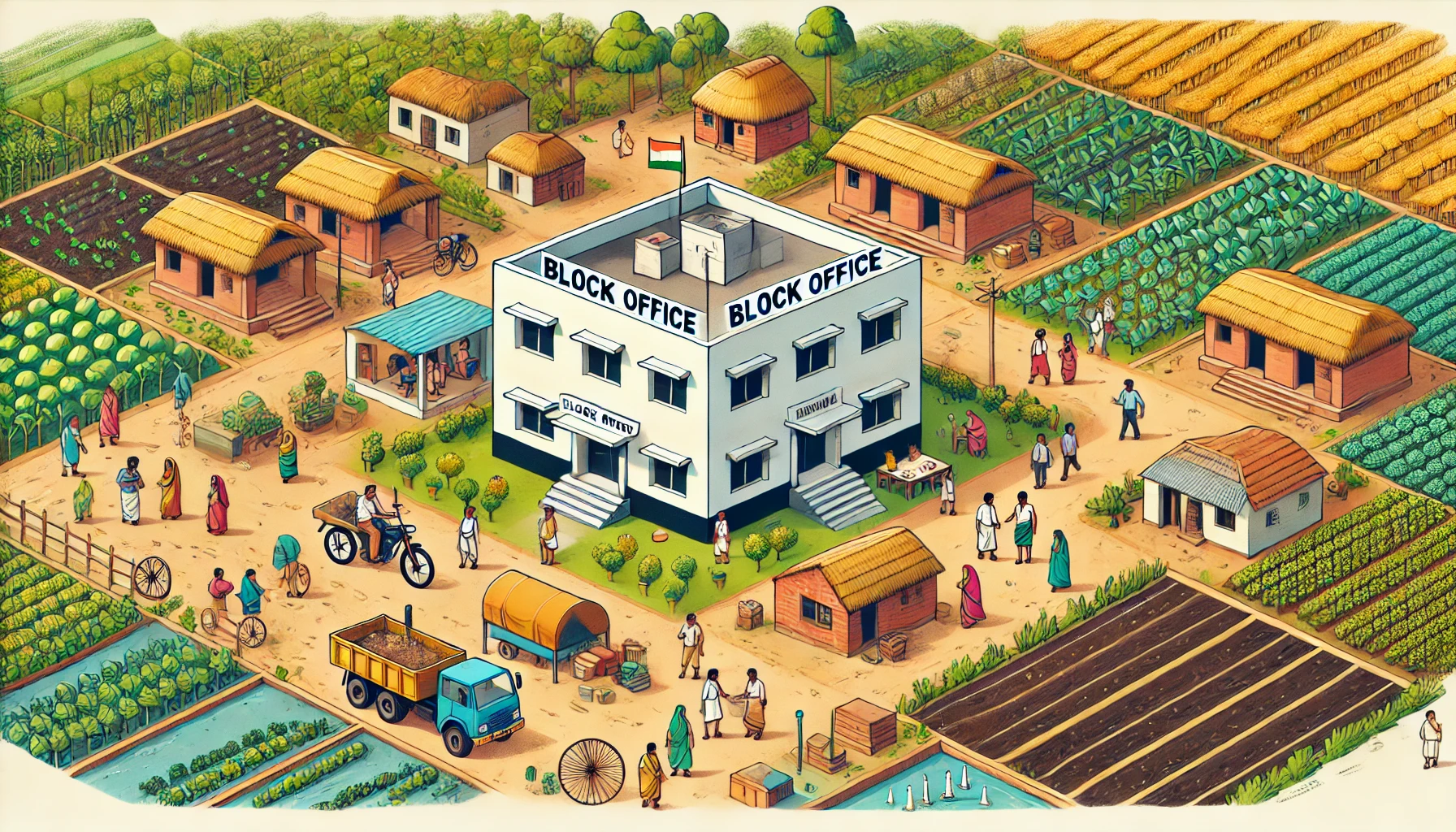India is a vast and diverse country, not only in terms of culture, language, and geography but also in its administrative structure. One key administrative unit that plays a vital role in governance and development at the grassroots level is the "block". In India, a block is a sub-division of a district, designed to help in the efficient management of rural and semi-urban areas.
What is a Block?
A block (or community development block) is a rural administrative unit that is part of a district. It typically consists of a group of villages and panchayats (local governing bodies). Each block acts as a decentralized hub for implementing development programs, managing government schemes, and facilitating coordination between village-level administrations.
Structure of Blocks in India
India's administrative hierarchy is structured in a way that allows for effective local governance. The main divisions are as follows:
- State: The largest administrative unit.
- District: Each state is divided into districts, which are the primary administrative units.
- Block: Each district is further divided into blocks, also known as tehsils or talukas in some regions.
- Village: The smallest administrative unit, consisting of villages governed by panchayats.
Functions of a Block
Blocks play an essential role in the planning and execution of rural development projects. Here are some of the key functions:
-
Implementation of Government Schemes: Blocks oversee various central and state government schemes aimed at rural development, including housing, agriculture, and social welfare programs.
-
Panchayat Coordination: Blocks act as intermediaries between district administrations and village panchayats. The Block Development Officer (BDO) coordinates with village heads to ensure smooth functioning of local governance.
-
Infrastructure Development: Blocks are responsible for improving basic infrastructure like roads, water supply, schools, healthcare facilities, and electricity in rural areas.
-
Agricultural Support: Since agriculture is the backbone of India’s rural economy, blocks focus heavily on improving agricultural productivity. They provide support to farmers by introducing modern farming techniques, irrigation facilities, and financial aid.
-
Education and Healthcare: Blocks facilitate rural education programs and healthcare services by setting up schools and primary healthcare centers.
Block Development Officer (BDO)
The Block Development Officer (BDO) is the key official responsible for managing the block's development activities. The BDO coordinates with district officials and village heads to ensure that government policies and schemes are implemented effectively. This position plays a crucial role in grassroots governance.
Number of Blocks in India
India has more than 6,000 blocks spread across its states and union territories. The exact number of blocks can vary as new blocks may be created or existing ones reorganized based on the needs of governance and population growth.
Here are a few examples of block numbers in some states:
- Uttar Pradesh: Over 900 blocks
- Maharashtra: Over 350 blocks
- Tamil Nadu: Over 380 blocks
- West Bengal: Around 340 blocks
Challenges Faced by Blocks
Despite their critical role, blocks in India face several challenges:
-
Lack of Resources: Many blocks, particularly in remote areas, suffer from a lack of funds, skilled personnel, and modern technology, which limits their ability to execute development projects.
-
Inefficient Implementation: Bureaucratic delays and corruption can hinder the effective implementation of schemes at the block level.
-
Geographical Barriers: Blocks located in hilly, forested, or rural areas with poor connectivity face significant challenges in accessing services and infrastructure development.
-
Disparity in Development: There are disparities in development across blocks, with some being more advanced than others due to socio-economic, geographical, and political factors.
Success Stories: Model Blocks in India
While many blocks face challenges, some have emerged as model blocks, showcasing successful governance and development. For instance:
- Hiware Bazar in Maharashtra is a success story of rural development, known for its water conservation efforts, agricultural productivity, and high income levels of its residents.
- Dholera in Gujarat has transformed into an industrial hub, marking significant growth in infrastructure and employment opportunities.
Conclusion
The blocks of India serve as the backbone of rural administration and development. They act as crucial administrative divisions that help bring government policies to the grassroots level, ensuring that rural areas benefit from welfare schemes and development projects. However, challenges such as resource shortages and inefficient governance persist. Addressing these issues is key to ensuring equitable development across all blocks in India.
Understanding the importance of blocks can help us appreciate how local governance plays a significant role in shaping India's rural landscape and improving the quality of life for millions of people.
To buy RERA Certified & DTCP Approved Gated Community Villa Open Plots in Andhra Pradesh & Telangana please contact:
For Sales : 8179712384
Mail : sales@openplots.net
